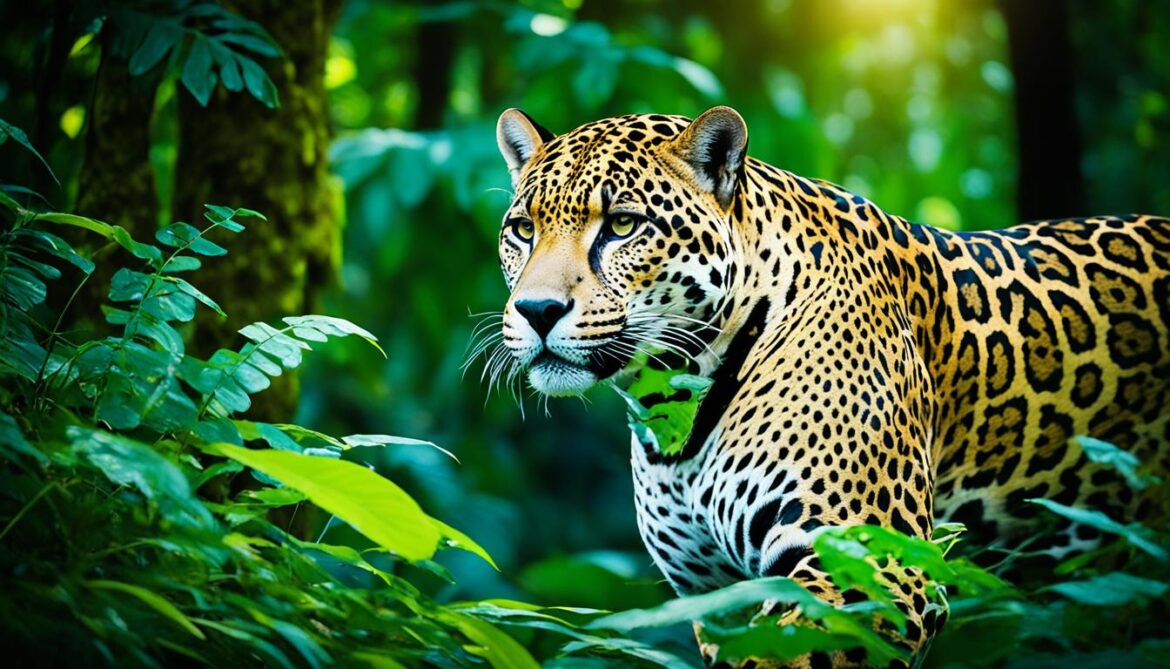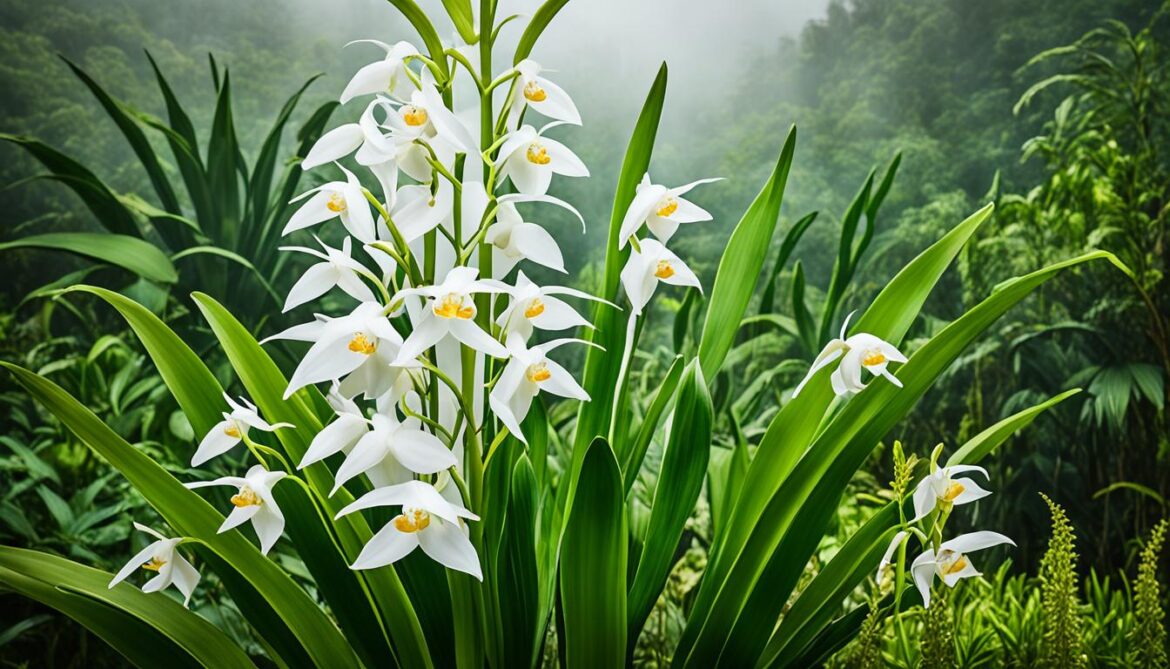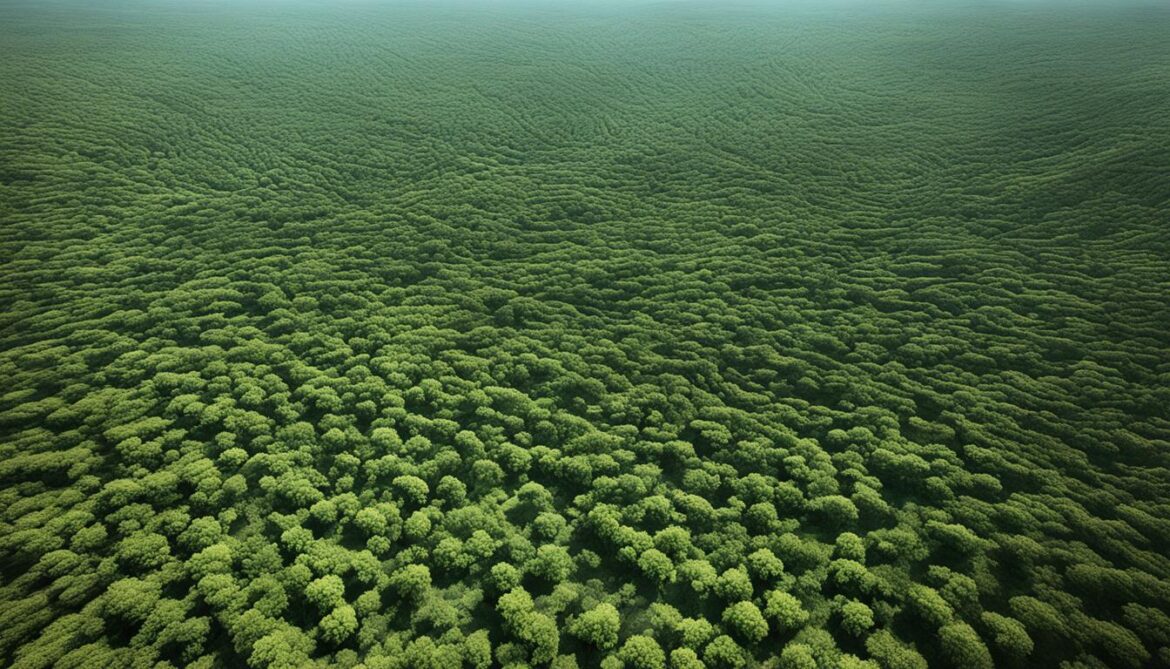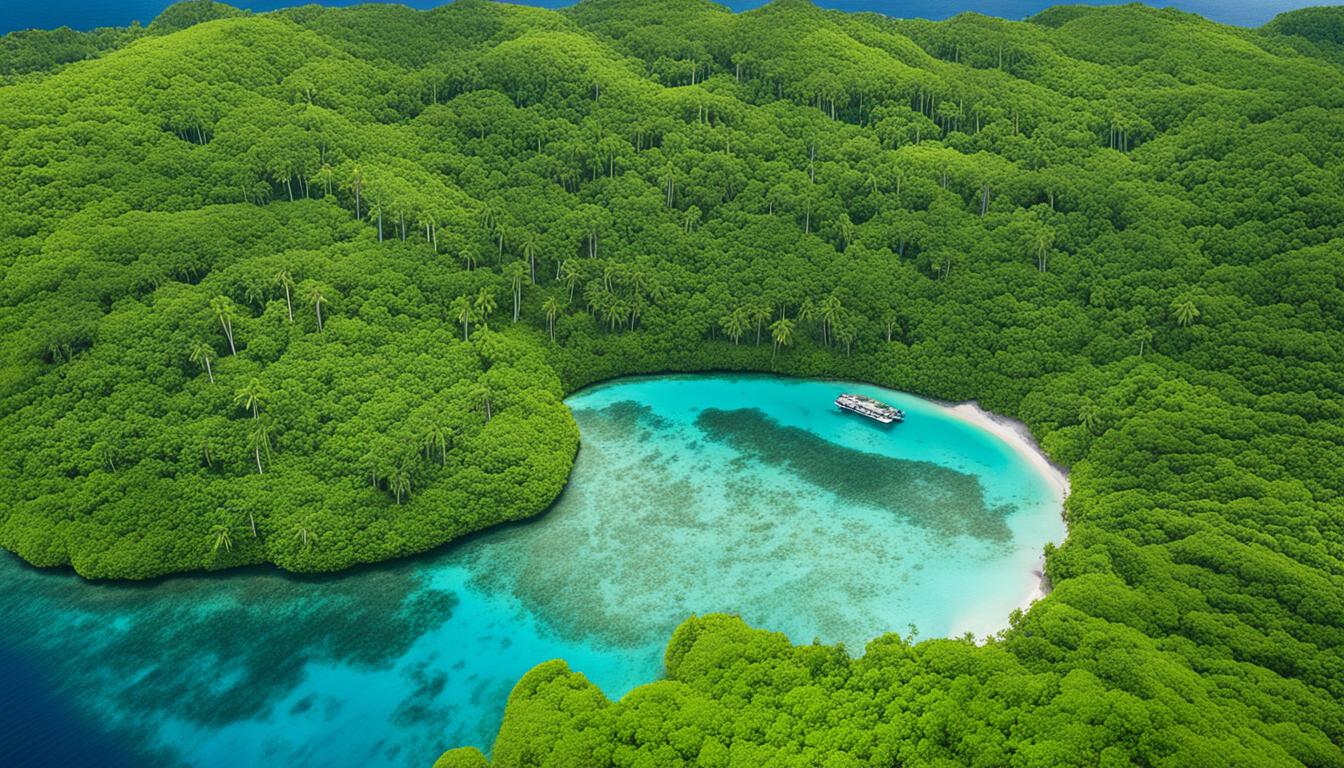Mexico Biodiversity and the Built Environment
Did you know that Mexico is home to over 1,300 endangered species?
Mexico is renowned for its remarkable biodiversity, encompassing a vast array of wildlife and plant species that are found nowhere else on Earth. From its diverse Mexican ecosystems to the wealth of flora and fauna, Mexico’s natural heritage is truly awe-inspiring. However, this biodiversity is currently facing numerous threats that jeopardize its existence. In this article, we will delve into the unique animal and plant species that contribute to Mexico’s biodiversity and examine the pressing challenges they confront.
Key Takeaways
- Mexico is home to over 1,300 endangered species.
- Mexico’s biodiversity is under threat from habitat loss, climate change, and illegal wildlife trade.
- The conservation of Mexico’s biodiversity relies on government initiatives, private organizations, and community involvement.
- Coordinated efforts are being made to protect Mexico’s biodiversity, including the Sustainable Productive Systems and Biodiversity project.
- Conserving Mexico’s biodiversity is essential for maintaining ecological balance and the sustainable use of natural resources.
The Rich Biodiversity of Mexico
Mexico is renowned for its rich biodiversity, encompassing diverse ecosystems that support a wide range of plant and animal species. From lush rainforests to mesmerizing mangrove swamps, Mexico’s landscapes are a treasure trove of natural wonders. These Mexican ecosystems provide a habitat for countless unique animal and plant species, making Mexico a hotspot for biodiversity.
Within Mexico’s diverse landscapes, you can find a fascinating array of animal species. The country is home to majestic creatures such as the vaquita porpoise, an endangered species found exclusively in the Gulf of California. The leatherback sea turtle, with its impressive size and distinctive leathery shell, also calls Mexico its home. And let’s not forget about the elusive jaguar, a symbol of strength and grace, found wandering through Mexico’s jungles.
Plants in Mexico are equally captivating, with unique species adding to the country’s natural heritage. The white nun orchid, found in Mexico’s stunning cloud forests, adds a touch of elegance to the lush greenery. Various cacti species, including the iconic giant saguaro cactus and the intriguing organ pipe cactus, thrive in Mexico’s arid regions, adapting to harsh conditions and captivating visitors with their resilience.
Mexico’s natural heritage extends to diverse habitats like tropical rainforests, coastal wetlands, and high-altitude grasslands. These diverse Mexican ecosystems provide essential support for the country’s plant and animal species, offering a sanctuary for their survival. However, the International Union for Conservation of Nature (IUCN) classifies over 1,300 species in Mexico as endangered, emphasizing the urgent need to protect Mexico’s biodiversity for future generations.
The preservation of Mexico’s biodiversity is crucial, as it safeguards not only individual species but also the overall health and resilience of ecosystems. Protecting Mexico’s rich natural heritage ensures the survival of endangered species, maintains ecological balance, and contributes to the beauty and wonder of our planet.
Unique Animal Species in Mexico
Mexico is proud to be home to a remarkable variety of animal species, many of which are found exclusively within its borders. These unique animal species contribute to the wildlife diversity in Mexico and are crucial for maintaining the country’s biodiversity. Some notable examples include the critically endangered vaquita porpoise, the majestic jaguar, the leatherback sea turtle, the Mexican gray wolf, the Mexican ajolote salamander, the vibrant scarlet macaw, and the iconic monarch butterfly.
These animal species play vital roles in maintaining ecological balance within Mexico’s diverse landscapes, but they are also facing numerous threats to their survival, such as habitat loss, climate change, illegal wildlife trade, and pollution.

“Mexico is proud to be home to a remarkable variety of animal species, many of which are found exclusively within its borders. These unique creatures contribute to the wildlife diversity in Mexico and are crucial for maintaining the country’s biodiversity.”
Threats to Unique Animal Species
The unique animal species in Mexico face several threats that put their survival at risk. Habitat loss, primarily due to deforestation and urbanization, is a significant threat to these species. Climate change is also a pressing concern, impacting the availability of resources and altering ecosystems. Illegal wildlife trade poses another threat, driving the exploitation and depletion of animal populations. Pollution, including water and air pollution, further exacerbates the challenges faced by these unique animal species.
Conservation Efforts
Efforts are underway in Mexico to protect these unique animal species and their habitats. Conservation organizations collaborate with government agencies and local communities to implement conservation strategies. These efforts focus on habitat restoration, establishing protected areas, promoting sustainable tourism, and raising awareness about the importance of biodiversity conservation.
The Mexican government has designated several national parks and reserves to safeguard the habitats of these unique animal species. Through various conservation projects, partnerships, and international collaborations, Mexico aims to ensure the long-term survival of its fascinating and invaluable wildlife.
| Unique Animal Species | Threats |
|---|---|
| Vaquita Porpoise | Illegal fishing, habitat loss |
| Jaguar | Habitat loss, poaching |
| Leatherback Sea Turtle | Habitat loss, pollution, fishing |
| Mexican Gray Wolf | Habitat loss, persecution |
| Mexican Ajolote Salamander | Habitat loss, pollution |
| Scarlet Macaw | Habitat loss, illegal trade |
| Monarch Butterfly | Habitat loss, climate change, pesticides |
These examples highlight the urgent need for conservation efforts to protect Mexico’s rich biodiversity and ensure the survival of these unique animal species for future generations.
Unique Plant Species in Mexico
Mexico is not only home to unique animal species but also boasts a wide range of distinctive plant species. One notable example is the white nun orchid, which is native to Mexico’s cloud forests and adds a touch of elegance to the country’s flora and fauna. The white nun orchid is a mesmerizing sight with its pure white petals and delicate structure, making it a cherished part of Mexico’s natural heritage.
Another remarkable plant species that thrives in Mexico’s diverse landscapes is cacti. Mexico is known for its vast array of cactus species, each with its own unique characteristics and adaptations. Among the iconic cactus species found in Mexico are the giant saguaro cactus and the organ pipe cactus. These towering cacti not only provide a striking appearance but also play important ecological roles in their respective ecosystems.
“The white nun orchid and the diverse array of cacti in Mexico contribute to the country’s rich biodiversity and natural heritage. These unique plant species form an integral part of Mexico’s vibrant ecosystems, adding beauty and ecological value.”
In addition to their visual appeal, these unique plant species serve vital ecological functions. The white nun orchid and cacti provide food, shelter, and breeding grounds for various insects, birds, and other animals. They also play a role in soil stabilization and nutrient cycling, contributing to the overall health and resilience of Mexico’s natural landscapes.
The preservation of these plant species is crucial for maintaining Mexico’s biodiversity and protecting its natural heritage. Efforts to conserve these unique plant species and their habitats involve sustainable land management practices, habitat restoration, and public awareness campaigns about the importance of biodiversity.
Biodiversity in Mexico’s Cloud Forests
Mexico’s cloud forests are particularly rich in unique plant species. These high-altitude forests are shrouded in mist, creating a unique microclimate that supports a diverse range of flora and fauna. The cloud forests are home to an abundance of epiphytes – plants that grow on other plants without relying on the ground for support. The mist-laden environment provides these plants with the necessary moisture and nutrients, allowing them to thrive in an otherwise challenging habitat.
One of the rare and captivating plant species found in Mexico’s cloud forests is the white nun orchid (Monja blanca). This orchid blooms with clusters of delicate white flowers, emanating a subtle fragrance throughout the forest. The white nun orchid is considered an iconic symbol of Mexico’s rich floral diversity and is highly esteemed among botanists and nature enthusiasts.
Cloud forests are also home to a variety of ferns, mosses, and bromeliads, which thrive in the cool and humid conditions provided by the perpetual mist. These plants contribute to the unique and enchanting atmosphere of the cloud forests, making them a hotspot for nature lovers and ecotourists.

The preservation of Mexico’s cloud forests and the unique plant species they harbor is of paramount importance for the conservation of the country’s natural heritage. Protecting these fragile ecosystems involves measures such as establishing protected areas, implementing sustainable land use practices, and raising awareness about the importance of cloud forest conservation.
Threats to Mexico’s Biodiversity
Despite Mexico’s commendable efforts to protect its biodiversity, several significant threats pose a risk to its diverse species. These threats, including habitat loss, climate change, and illegal wildlife trade, contribute to the decline of Mexico’s precious biodiversity.
Habitat Loss and Degradation
Habitat loss and degradation are major drivers of biodiversity decline in Mexico. The expansion of urban areas, agricultural practices, and mining activities result in the destruction and fragmentation of natural habitats. As a result, many plant and animal species lose their homes and struggle to survive.
Climate Change
The impacts of climate change, such as changing temperature and rainfall patterns, present additional challenges to Mexico’s biodiversity. Rising temperatures and altered precipitation can disrupt ecosystems and affect the distribution and abundance of species. This disruption can lead to population declines and increased vulnerability to other threats.
Illegal Wildlife Trade
Illegal wildlife trade poses a significant risk to Mexico’s biodiversity. The demand for endangered species, whether for their parts, pets, or exotic products, drives the illegal trade market. This trade puts immense pressure on vulnerable species and their habitats, potentially leading to their decline and even extinction.
Despite Mexico’s efforts, habitat loss, climate change, and illegal wildlife trade continue to endanger the country’s precious biodiversity.
To illustrate the severity of these threats, the table below provides a summary of the impact of each threat on Mexico’s biodiversity:
| Threat | Impact on Biodiversity |
|---|---|
| Habitat Loss and Degradation | Loss of suitable habitats for numerous species, fragmentation of ecosystems, and reduced biodiversity. |
| Climate Change | Disruption of ecosystems, altered species distribution, increased vulnerability to other threats, and potential population declines. |
| Illegal Wildlife Trade | Decimation of populations, disturbance of ecosystems, and increased risk of extinction for targeted species. |
These threats emphasize the urgent need for conservation efforts to protect Mexico’s rich biodiversity. By addressing these challenges and implementing effective conservation measures, we can safeguard the survival of endangered species and maintain the balance of Mexico’s fragile ecosystems.

Through collaborative action and a collective commitment to preservation, we can work towards a future where Mexico’s biodiversity thrives and remains a testament to the beauty and resilience of nature.
Efforts to Protect Mexico’s Biodiversity
The conservation of Mexico’s biodiversity is a top priority for the Mexican government. To safeguard the natural heritage of Mexico, the government has established national parks and protected areas throughout the country. These designated spaces serve as havens for wildlife and their habitats. The Mexican government has also implemented regulations to regulate hunting and fishing practices, ensuring the sustainable use of natural resources. However, conservation efforts extend beyond government initiatives. Private conservation organizations and community involvement also play vital roles in protecting Mexico’s biodiversity. Through collaborative efforts, Mexico strives to conserve its rich biodiversity and maintain the delicate balance of its ecosystems.
| Conservation Efforts | Protected Areas | Sustainable Use of Natural Resources |
|---|---|---|
| Establishment of national parks and protected areas | Havens for wildlife and their habitats | Regulations to regulate hunting and fishing practices |
| Private conservation organizations | Collaborative efforts | Conserve rich biodiversity |
| Community involvement | Maintain delicate balance of ecosystems |
“Conservation is a state of harmony between men and land.” – Aldo Leopold

Conservation Organizations in Mexico
In addition to government initiatives, several organizations in Mexico are actively involved in the conservation of biodiversity. These organizations focus on research, habitat restoration, and species conservation. They work tirelessly to protect endangered species and their habitats, promote sustainable practices, and engage in community outreach and education.
One prominent conservation organization in Mexico is CONABIO (National Commission for the Knowledge and Use of Biodiversity), which plays a crucial role in biodiversity conservation. CONABIO conducts extensive research, collecting data on Mexico’s diverse ecosystems and species. This research is essential for developing effective conservation strategies and making informed decisions regarding the sustainable use of natural resources.
Non-governmental organizations (NGOs) also contribute significantly to biodiversity conservation in Mexico. These organizations work collaboratively with local communities, government agencies, and other stakeholders to protect and restore habitats, conserve species, and promote environmental awareness.
NGOs, such as the Mexican Center for Environmental Law (CEMDA) and the Pronatura organization, are actively engaged in habitat restoration and conservation projects. Through their efforts, they seek to address the root causes of biodiversity loss and promote sustainable development practices that benefit both ecosystems and local communities.
Conservation organizations in Mexico understand the importance of community involvement in protecting biodiversity. They actively engage with local communities, raising awareness about the value of Mexico’s natural heritage and providing educational programs to foster a sense of stewardship among the population.
Through collaborative efforts and partnerships, these organizations strive to preserve Mexico’s rich natural heritage for future generations. By combining scientific research, habitat restoration initiatives, and community outreach, conservation organizations in Mexico play a vital role in safeguarding the country’s biodiversity and promoting sustainable practices.
Coordinated Efforts for Biodiversity Conservation
Since 1996, coordinated efforts for biodiversity conservation and environmental sustainability in Mexico have been underway, with a particular focus on the Mesoamerican Biological Corridor. This collaborative initiative involves the World Bank, the Global Environment Fund, and the Mexican government, working together to promote the integration of biodiversity conservation with productive landscapes. A key objective is to emphasize the sustainable and biodiversity-friendly use of natural resources.
The project recognizes the significance of incorporating biodiversity-friendly management practices within priority biological corridors. By doing so, it aims to protect and enhance the ecological connectivity between different habitats, allowing wildlife to move freely and maintain healthy populations. The preservation of these corridors is crucial for maintaining the overall health and resilience of Mexico’s ecosystems.
Moreover, the project emphasizes the importance of strengthening the capacity of producer associations to access markets for biodiversity-friendly products. By supporting and incentivizing sustainable practices, it aims to create economic opportunities that align with biodiversity conservation objectives. This inclusive approach involves working with local communities and empowering them to become stewards of their natural resources.

Through this coordinated effort, Mexico showcases an innovative approach that transcends traditional conservationist perspectives. The focus lies on striking a balance between conservation and the productive use of natural resources, recognizing that sustainable practices can contribute to both economic prosperity and environmental well-being.
“The preservation of our natural heritage requires a holistic approach that brings together diverse stakeholders and aligns their efforts towards a common goal. Through coordinated efforts, we can ensure the long-term protection of Mexico’s biodiversity and secure a sustainable future for generations to come.”
Preoccupying Context for Biodiversity Conservation
With the release of the Intergovernmental Science-Policy Platform on Biodiversity and Ecosystem Services (IPBES)’s Global Assessment Report on Biodiversity and Ecosystem Services, the alarming state of our natural world becomes more apparent. The report presents a grim reality of unprecedented species extinction rates and the profound impacts of human activities on land and sea areas globally. Major drivers of biodiversity decline, including climate change, changes in land and sea use, direct exploitation of organisms, pollution, and invasive alien species, have led to the degradation of natural capital. In response, transformative change is urgently needed to address these threats and reverse the decline of nature.
Transformative change refers to a fundamental reorganization across technological, economic, and social factors that can drive the necessary shift towards sustainability and biodiversity conservation. It requires a comprehensive approach that goes beyond traditional conservation measures and takes into account the interconnectedness of our natural systems. This transformative change is essential to ensure the protection, conservation, and sustainable use of our natural resources.
One initiative that aligns with the call for transformative change is the Sustainable Productive Systems and Biodiversity (SPSB) project in Mexico. This project focuses on promoting sustainable and biodiversity-friendly practices in productive landscapes. By integrating biodiversity conservation into various productive systems, such as silvo-pastoral, coffee production, cocoa and honey production, wildlife use, and eco-tourism, the SPSB project aims to achieve a harmonious balance between economic development and the protection of natural capital. Through the incorporation of sustainable production practices and the strengthening of producer associations, the project aims to create alternative income-generating opportunities that promote biodiversity-friendly livelihoods.

The IPBES report emphasizes that the urgency of transformative change cannot be understated. Our actions today will determine the fate of our biodiversity and the health of our ecosystems. It is crucial for individuals, governments, and organizations to collaborate and commit to sustainable practices, conservation efforts, and the protection of our natural capital.
As we confront the threats to our natural world, the SPSB project serves as a powerful example of how transformative change can be implemented on the ground. By fostering biodiversity-friendly practices and integrating conservation into productive landscapes, Mexico is taking a proactive stance towards safeguarding its biodiversity and ensuring a sustainable future for generations to come.
“Transformative change is not optional at this point. It is essential if we want to halt the unprecedented decline of nature and secure a livable planet for future generations.” – IPBES Report
Sustainable Productive Systems and Biodiversity (SPSB)
The Sustainable Productive Systems and Biodiversity (SPSB) project in Mexico, which started in 2013, aims to conserve and protect biodiversity in the country. The project focuses on promoting biodiversity-friendly management practices in productive landscapes to ensure the sustainable coexistence of agriculture and natural ecosystems.
The SPSB project works towards incorporating sustainable production techniques and biodiversity maintenance in various productive systems, including silvo-pastoral systems, coffee production, cocoa and honey production, wildlife use, and eco-tourism. By implementing these biodiversity-friendly practices, the project helps to create a balance between economic activities and the preservation of Mexico’s rich natural heritage.
To further its mission, the SPSB project also emphasizes strengthening the capacity of producer associations. By empowering these associations, the project enables local producers to explore and expand business opportunities for biodiversity-friendly products. This not only promotes sustainable livelihoods but also encourages the adoption of environmentally responsible practices.
The SPSB project recognizes the importance of providing alternative income-generating opportunities, particularly in areas that are both biodiverse and economically marginalized. By integrating biodiversity-friendly practices into local production systems, the project creates avenues for sustainable economic growth while safeguarding Mexico’s diverse ecosystems.
Benefits of the SPSB Project:
- Promotes sustainable and responsible land use
- Preserves Mexico’s biodiversity and ecological integrity
- Improves local livelihoods through the development of alternative income streams
- Strengthens producer associations and enhances market access for biodiversity-friendly products
- Creates synergy between economic activities and environmental conservation
Through its efforts, the SPSB project contributes significantly to the conservation of Mexico’s biodiversity. By prioritizing sustainable and biodiversity-friendly practices in productive landscapes, the project ensures the long-term well-being of both natural ecosystems and local communities.

Image: A visual representation of biodiversity-friendly practices in action.
Conclusion
Mexico’s rich biodiversity is a valuable natural heritage that requires conservation and protection. The country’s diverse ecosystems and unique animal and plant species contribute to its biodiversity and play essential roles in maintaining ecological balance. However, threats such as habitat loss, climate change, and illegal wildlife trade put Mexico’s biodiversity at risk.
Efforts to protect Mexico’s biodiversity involve government initiatives, private conservation organizations, and community involvement. Through coordinated efforts, Mexico strives to conserve its biodiversity and promote the sustainable use of natural resources. By safeguarding Mexico’s rich natural heritage, we can ensure the survival of endangered species and the resilience of ecosystems for future generations.
Conservation plays a vital role in preserving Mexico’s unique biodiversity, which encompasses a remarkable range of wildlife and plant species. The sustainable use of natural resources is crucial to maintaining the delicate balance of ecosystems and ensuring the long-term well-being of Mexico’s natural environment. By prioritizing conservation efforts and fostering sustainable practices, Mexico can continue to protect its biodiversity for the benefit of both present and future generations.








